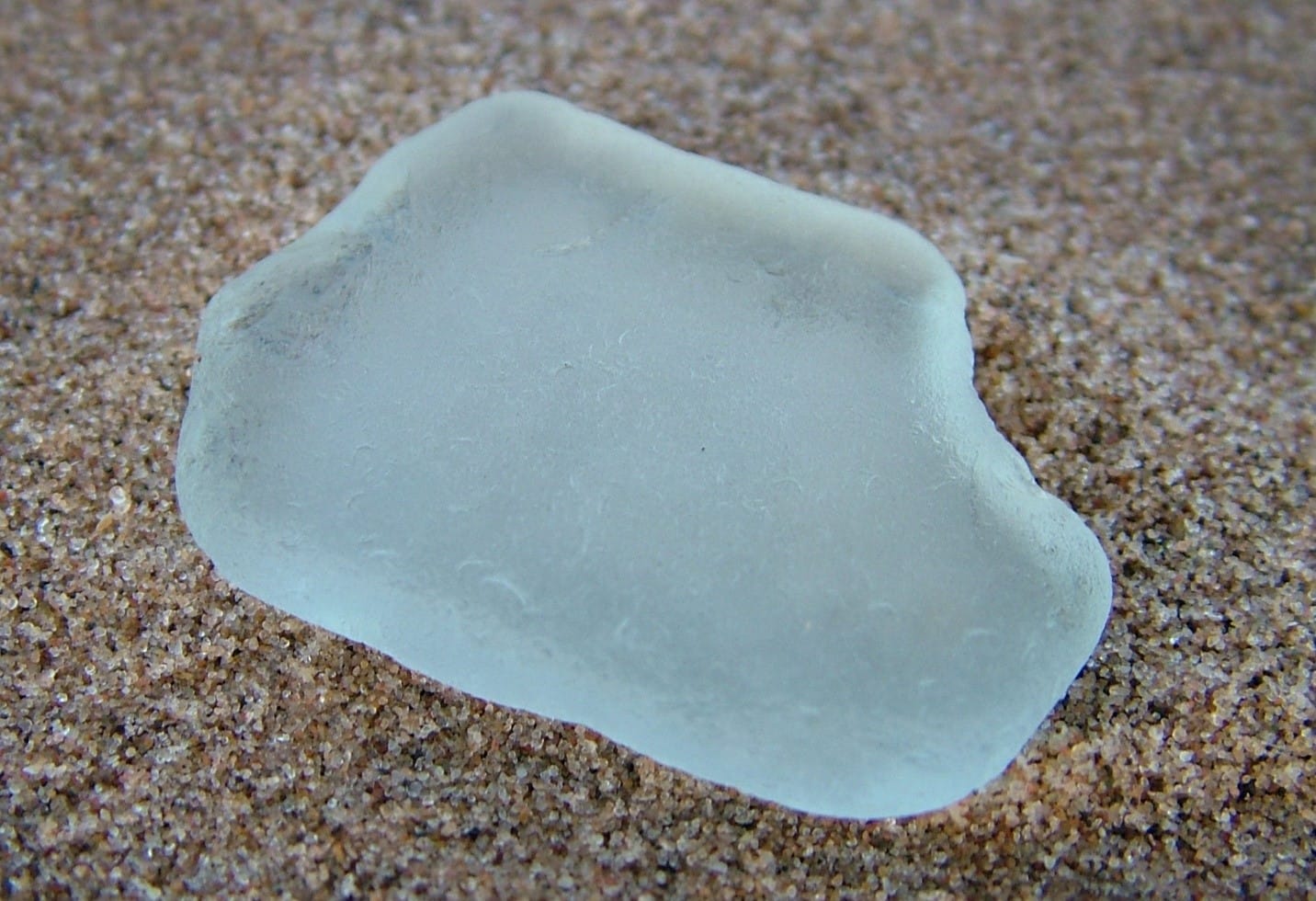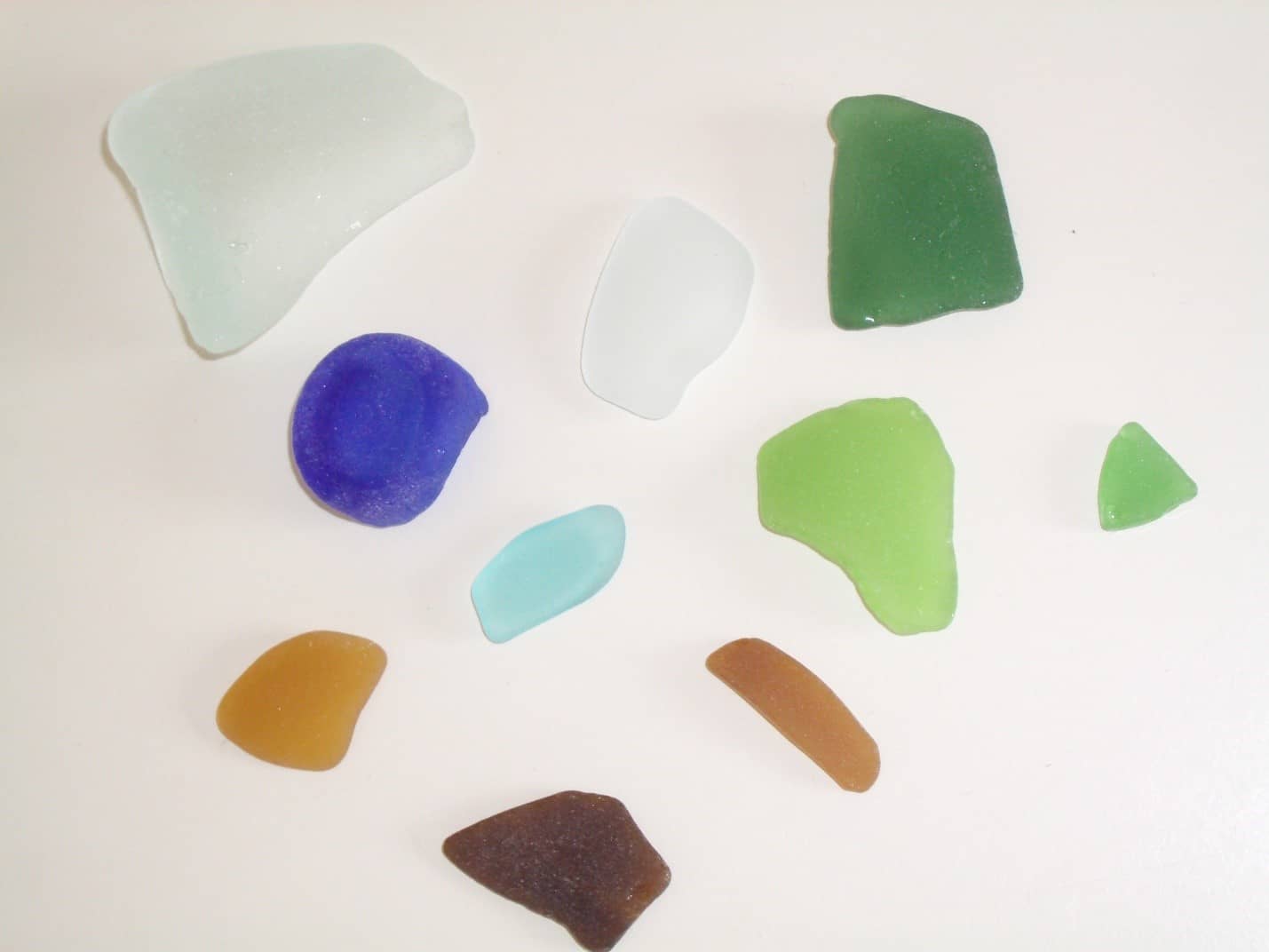As you walk along the beach, you spot it - a green, brown, or even blue or red piece of sea glass. As beautiful as a gemstone in some cases, they have been made into jewelry and decorative pieces of art.
Have you ever wondered how that amazing piece of sea glass came to be on the beach?
Where Sea Glass Starts
Sea glass has humble, everyday origins - starting out as shards of broken glass from bottles, jars, glassware, tableware or even shipwrecks. Back when it was even more common to dump garbage in the water, glass from trash was dumped into the sea, especially along shipping lanes and shorelines.
Sharp shards of sea glass are worn down, being chemically and physically weathered over time, to form the rounded, frosted appearance of sea glass.
The Process of Sea Glass
When glass is tossed into the sea, it is broken into smaller shards. These pieces are then tumbled, tossed, pushed and pulled by tides and waves, and rolled against rocky surfaces or dragged along the shore.
This smooths the glass shard down over time and shapes it into round or triangular pieces which lose their glossy appearance, and become frosted with unique etchings. The frosting happens when salt water leaches into the glass, chemically altering it.
This happens over a period of anywhere between five and fifty years.
If you find a piece of glass that's too shiny or jagged, throw it back in for a future sea glass collector to discover!

By Chris Howells (= Chowells) (Taken by Chris Howells) [GFDL (http://www.gnu.org/copyleft/fdl.html) or CC-BY-SA-3.0 (http://creativecommons.org/licenses/by-sa/3.0/)], via Wikimedia Commons
How Sea Glass Ends Up on the Beach
There are areas in the ocean where dumping is very prevalent, and one is known as the Great Pacific Garbage Patch.
Warm air and currents pushes garbage to this particular patch of the ocean, and tides wash the debris up onto the shores, bringing along with it glass, and ultimately sea glass.
Glass also washes up on the beach more commonly along popular marine trading routes and ports. This is where garbage used to be treated onboard, then tossed into the ocean.
Sea glass is more likely to be found along these shorelines and routes, as the waves toss the glass up against the shore.
Different Types and Rarity of Sea Glass
Sea Glass can be distinguished by its color, with some more common than others.
The most common colors are Kelly green, brown and white. More uncommon are those in soft blue or green, forest or lime green, gold, amber and jade.
Rare sea glass comes in aqua, pink, cornflower blue, citron, cobalt blue, opaque white, and purple or amethyst. The rarest of them all comes in orange, teal, red, yellow, turquoise, black and gray.
There are also different types of sea glass, distinguishable by their origins:
- Vaseline glass is one of the more rare ones that is radioactive as it is made with uranium and will glow under a black light. Though its radioactivity is low enough to be harmless, it’s still advisable to not eat off an antique Vaseline glass dish.
- Flash glass is glass that has multiple layers of colors, which probably comes from decorative glassware, such as vases and bowls.
- Cobalt blue sea glass most likely comes from three kinds of bottles - the Emerson’s Bromo Seltzer, Milk of Magnesia and Poison bottles.
- Red sea glass came from the old practice of making red bottles by using real gold. It was not a common practice because of how costly it is, and that’s why it’s rare to find this type of glass today.
- Lavender sea glass is also known as ‘sun glass’, because it was left in the sun and turned a shade of lavender or even more rarely, purple. That’s because that glass was made with manganese, a mineral added into glass, which turns it purple when exposed to the sun.
- Carnival glass, popular in the 1900s, that has an iridescent sheen, as well as a marbled glass which is opaque, and is also sometimes called malachite.
- Cloud glass is a translucent glass made around the 1920’s - 30’s that has had a darker color added into it at the last moment to create cloud-like effects.
- Fire, campfire, and bonfire sea glass is glass which was melted from a fire on the beach. It contains objects like pebbles or burnt wood which it dried over.
- Spatter glass, sometimes called splatter, is a type of glass which was popular in the 1880s. It involved coating glass in tiny pieces to create a splattered effect.
- Safety glass is from old safety glass on boats and cars that was made with thick wire within, which prevented the glass from shattering when broken.
- Milk glass or opal glass was a popular glass first produced in Venice in the 16th Century, and is an opaque glass that looks like milk. It glows in the dark due to the fluorite that was used to produce the opacity.
- Lastly, there are also Custard glass, a pale yellow milk glass, and Jadeite glass, which is pale green.

By No machine-readable author provided. Epstein.Mark assumed (based on copyright claims). [Public domain], via Wikimedia Commons
Tips on Finding Sea Glass
Keeping the origins of Sea Glass in mind, will be helpful in looking for an area where there has been a historic settlement at some point. There will be a higher chance of finding pieces of sea glass that washed up there when coastal dumping was still a common practice. If these beaches are also along historic marine traffic, or along major marine stops, you’ll also be more likely to find pieces.
Check when low tide is before you head down, refer to a tide chart for more specific measurements. I have found the best amount of sea glass an hour before or an hour after low tide.
Also remember to check the weather report, dress accordingly and wear appropriate shoes that are comfortable on sand and slippery rocks.
As areas with stronger and more forceful tides moves shards of glass better and smooth down their edges, you may have a better chance on beaches that are located north on the planet - that’s where the tides are more dramatic. These beaches will have good tide fluctuations.
Whenever possible, plan a sea glass hunt after a storm or high winds. The combination of high winds and rough seas toss up pieces that are buried offshore beneath the surface. Beaches that have rocky or pebbly patches are more able to easily catch sea glass, improving your chances of finding them among the rocks.
Beaches that also aren’t that touristy or crowded all the time with fellow collectors, will offer a higher chance of you finding sea glass. Bring a container to carry your sea glass in, and it would be nice to bring along a bag to pick up any garbage that you see along the way too!
Searching for sea glass is a process, so do take care, and make a point to be aware of local beach guidelines and laws. Many communities also have private property laws, so be wary of accidentally intruding on someone else’s property.
Look up shoreline restoration projects, wildlife habitats, property lines and tide lines to be sure of where you are heading. With that in mind, happy sea glass hunting!
Discovering a piece of sea glass can be an enjoyable and even meditative experience! As you find and collect them, remember to be mindful of the beach you are on, and to show it and the people around you their due respect.

Still doesn’t really explain why the glass ends up on the beach as opposed to sinking to the sea floor?